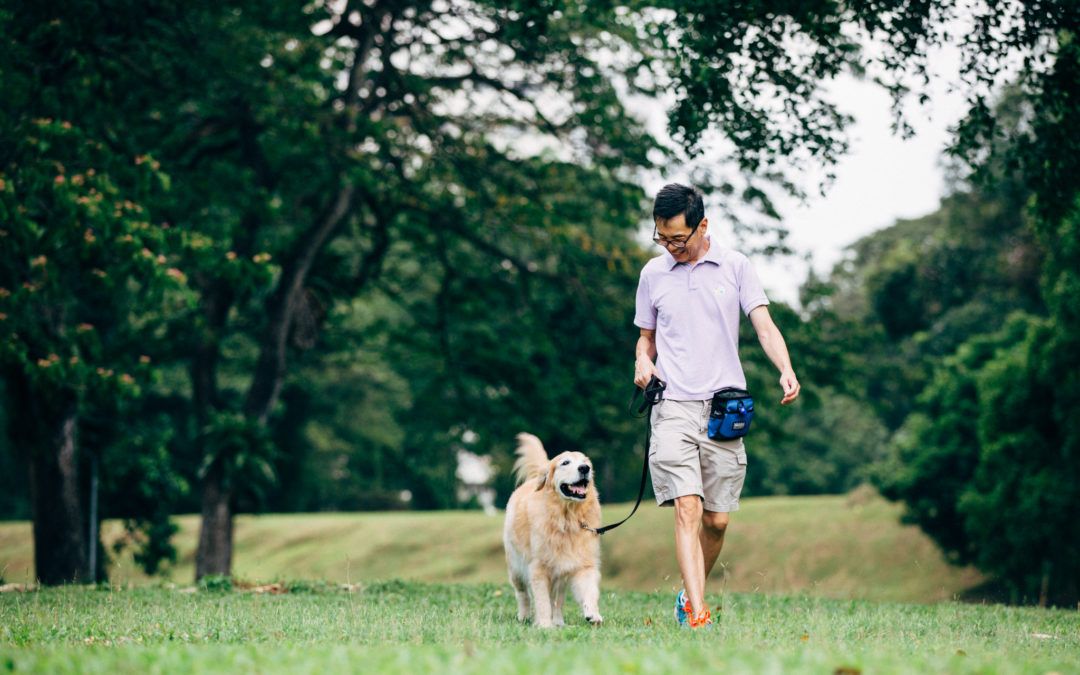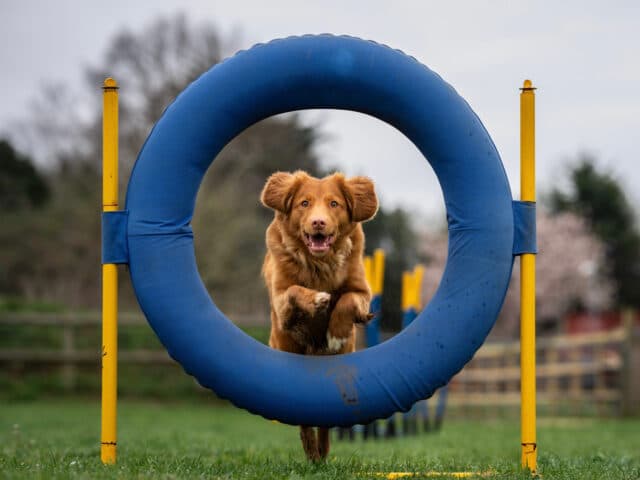The Psychology of Marker Training: A Complete Guide to Understanding Canine Behavior Transformation
An in-depth exploration of marker training, including its psychological underpinnings, benefits, and efficacy, as well as a comparison with traditional training methods and real-life success stories, with a focus on Off Leash K9 Training as a leader in marker training.
The Fundamentals of Marker Training
Marker training is a powerful tool in dog behavior modification, focusing on positive reinforcement to encourage desired behaviors. By using event markers like clickers, trainers can effectively communicate to their dogs the exact moment they exhibit the behavior that is being reinforced. For instance, when training a dog to sit, the clicker marks the precise moment the dog’s bottom touches the ground, followed by a treat as a reward, reinforcing the action.
The role of secondary reinforcers, such as clickers, in marker training is crucial. Clickers, through classical conditioning, become associated with rewards, eventually eliciting the same positive response as the treat itself. This process is essential in shaping behavior as dogs learn to interpret the click as a signal for a job well done, leading to consistent positive reinforcement for desired actions. An example of this is when a dog successfully fetches a ball, the clicker sound marks the exact behavior of retrieving the ball, strengthening the association between the action and the reward.
Understanding the Psychology Behind Marker Training
Marker training is a fascinating method that delves into the realms of classical and operant conditioning to shape dog behavior. Classical conditioning is evident in clicker training, where the neutral stimulus (click sound) becomes a predictor of a positive event (treat), akin to Pavlov’s bell triggering salivation in dogs. This association between the click and the treat is crucial in establishing the click as a secondary reinforcer, making it as rewarding as the primary reinforcer, such as food.
For example, when training a dog to sit on command, the click bridges the time gap between the correct behavior and the treat, allowing for precise communication with the dog. This precise timing of the click marks the exact moment the dog sits, reinforcing the behavior effectively. Through classical conditioning, the dog learns that the click signifies a forthcoming reward, encouraging the repetition of the desired action. This psychological mechanism underlines how marker training capitalizes on the dog’s natural learning processes to achieve obedience and desired behaviors.
Benefits and Efficacy of Marker Training
Marker training, a form of reward-based training, has gained recognition for effectively modifying dog behavior through positive reinforcement techniques. By utilizing markers like clickers, this method focuses on reinforcing desired behaviors, making it a humane and efficient approach to shaping a dog’s actions. For instance, consider a case where a rescue dog with fear-based aggression issues undergoes marker training. Through consistent positive reinforcement for calm behavior and redirecting negative responses, the dog gradually learns to replace aggression with more positive reactions, showcasing the powerful impact of marker training on behavior modification.
Moreover, the humane aspect of reward-based training shines through in the emphasis on building trust and strengthening the bond between a dog and its owner. This approach fosters a supportive and encouraging environment for the dog to learn new behaviors, contributing to long-lasting changes in their responses and attitudes. For instance, a dog previously exhibiting destructive behavior due to separation anxiety can benefit greatly from marker training. By rewarding calm behavior and independence during short departures, the dog learns to associate positive actions with rewards, gradually overcoming anxiety and displaying improved behavior when left alone, highlighting the transformative effects of marker training on canine behavior.
 Contrasting Marker Training with Traditional Methods
Contrasting Marker Training with Traditional Methods
Marker training contrasts sharply with traditional leash-based training methods. While leash-based techniques often rely on correction and punishment to deter unwanted behaviors, marker training utilizes positive reinforcement to encourage and shape desired behaviors in dogs. For example, instead of correcting a dog for pulling on a leash, a marker trainer would reward the dog for walking calmly beside them, reinforcing the positive behavior and incentivizing the dog to repeat it.
Moreover, the speed of learning in marker training surpasses that of traditional methods. Dogs trained with markers quickly associate the sound of a click or a verbal marker with a reward, enabling them to grasp commands and behaviors more rapidly. This accelerated learning not only enhances the training experience but also boosts the dog’s confidence and engagement during sessions, leading to more effective results in behavior modification. The contrast between the focus on punishment in traditional methods and the emphasis on positive reinforcement in marker training highlights the shift towards more humane and efficient training techniques in the dog training landscape.
Real-Life Success Stories of Marker Training
Marker training has transformed the behavior of countless dogs, showcasing remarkable success stories that illustrate the power of positive reinforcement techniques. For instance, consider the story of Max, a rescued dog who exhibited fear-based aggression towards strangers. Through marker training, Max learned to associate positive behaviors with rewards, gradually overcoming his fear and building confidence in social interactions. This example demonstrates how marker training can effectively modify complex behaviors, leading to significant improvements in a dog’s temperament and well-being.
Moreover, the impact of consistency and patience in marker training cannot be overstated. Take the case of Luna, a high-energy pup with a tendency to jump on visitors. By consistently using markers to reinforce calm greetings and patiently redirecting unwanted behaviors, Luna’s owners successfully transformed her greeting manners. This success story underscores the importance of dedication and time investment in marker training, emphasizing how these elements contribute to sustainable behavior modification and a strong bond between dogs and their owners. The real-life transformations seen in dogs like Max and Luna serve as compelling evidence of the long-lasting behavioral changes that can be achieved through the application of marker training techniques.
Off Leash K9 Training: A Leader in Marker Training
Off Leash K9 Training is renowned for its expertise in marker and treat training programs, setting the gold standard in positive reinforcement techniques for dog training. One of the fundamental principles that set Off Leash K9 Training apart is their emphasis on consistency and patience in the training process. This dedication to consistency ensures that dogs learn in a structured environment, leading to more reliable behavior outcomes. For example, through short but regular training sessions, dogs at Off Leash K9 Training quickly grasp new commands and behaviors, fostering a harmonious relationship between the dogs and their owners.
Moreover, the geographical reach of Off Leash K9 Training locations allows dog owners from various regions to benefit from their specialized programs. By making their training accessible to a wide audience, Off Leash K9 Training contributes to promoting positive reinforcement methods on a broader scale, which ultimately enhances the well-being of countless dogs and their owners. Notably, the success stories stemming from Off Leash K9 Training exemplify how marker training not only modifies behaviors effectively but also creates a strong, lasting bond between dogs and their human companions. This approach showcases how marker training can elevate the training experience, resulting in positive, long-term behavioral changes in dogs trained through their programs.



 Contrasting Marker Training with Traditional Methods
Contrasting Marker Training with Traditional Methods
